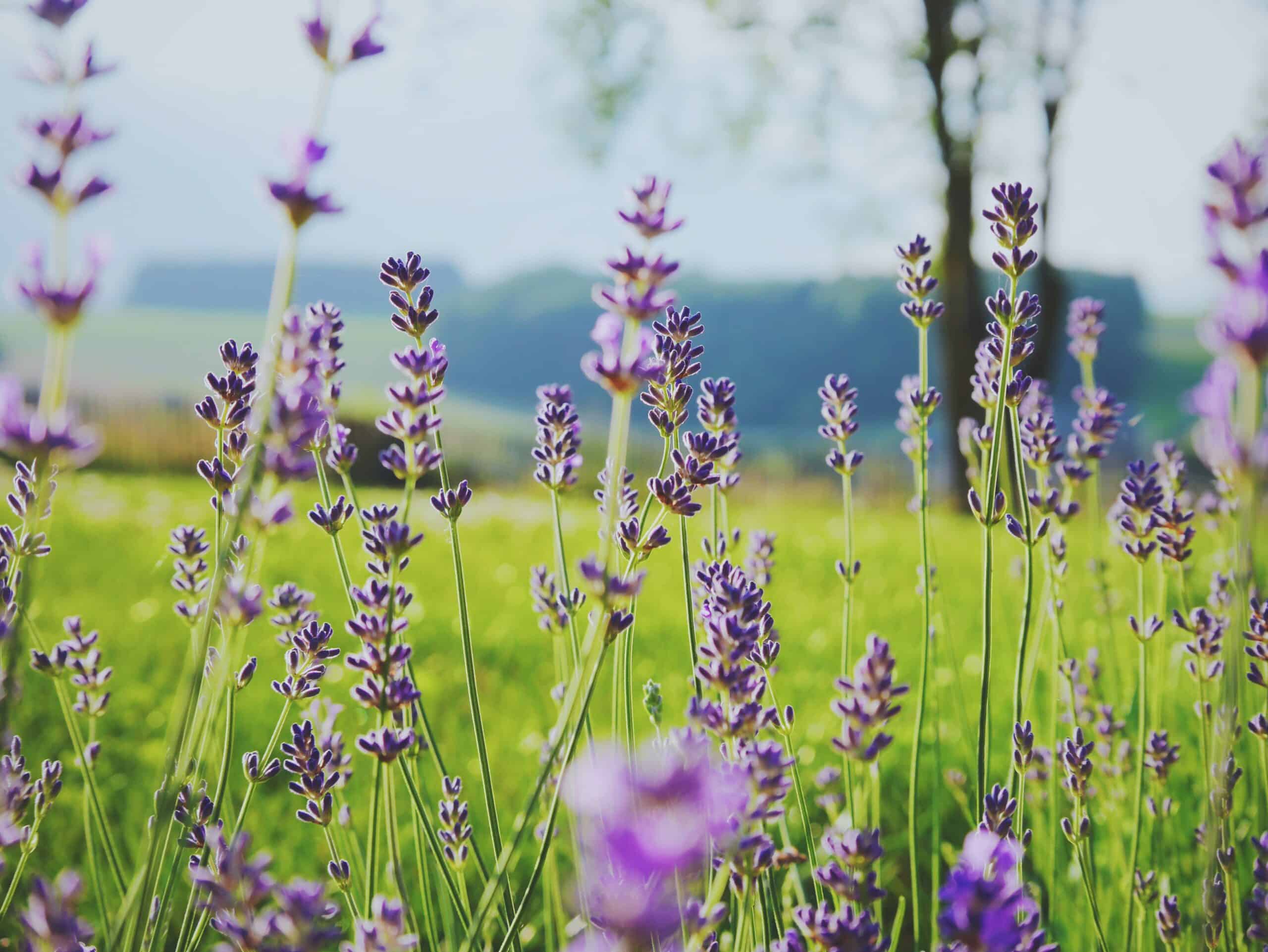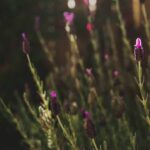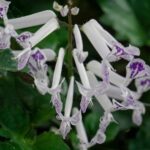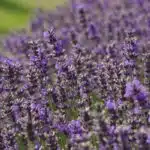The fragrant, delicate beauty of Munstead lavender has been a symbol of calm and serenity for centuries. Its purple buds bring a sense of tranquility to any garden, while its sweet scent carries a calming effect even from afar. As one of the most popular varieties of lavender, Munstead is prized for its hardiness and ease of care. As an experienced botanist and gardener, I’m here to walk you through the basics of growing and caring for this timeless favorite.
Munstead lavender is native to the Mediterranean region and is tolerant to many climates, making it ideal for both novice and experienced gardeners alike. It’s also known as Lavandula angustifolia ‘Munstead’ or English lavender, with its iconic grey-green foliage producing long stalks topped with deep purple flowers in the springtime. The impressive 2-3 foot height makes it an excellent choice for borders or hedges in your garden, while its low water requirements make it easy to maintain.
For best results, plant your Munstead lavender in well-drained soil that contains plenty of organic matter such as compost or manure. If you’re planting in pots or containers, use a mix formulated specifically for container plants; otherwise regular potting soil should suffice. Water your plants regularly but avoid overwatering as too much moisture can lead to root rot and other fungal diseases. To ensure proper blooming throughout the season, prune your Munstead lavender after flowering by cutting back dead stems and removing spent flowers at their base.
In conclusion, with proper care and attention Munstead lavender will reward you with years of beauty and fragrance in your garden! Stay tuned as we explore more tips on how to grow this delightful variety in the following paragraphs!
Choose The Right Location
As far as ancient botanical wisdom goes, the key to growing Munstead Lavender is in finding the best location for it. To ensure its success, a spot with plenty of sunlight and good soil drainage should be selected. Even though it’s an easy-going plant, Munstead Lavender still has some particular needs that must be met if you want to reap the aromatic rewards.
For starters, your chosen spot should have at least six hours of direct sunlight every day. The more sun the better! It’s also important to make sure there is adequate soil drainage; otherwise, Munstead Lavender may suffer from root rot or other water-related issues. If your garden has heavy clay soil, it might be a good idea to provide extra drainage by adding in organic matter such as compost or well-rotted manure.
When starting out with any new plant, taking the time to put in a bit of extra effort can really pay off in the long run. So don’t forget that when choosing a location for your beloved lavender – providing all its needs will result in a wonderfully fragrant and healthy specimen! With this preparation done, you can start thinking about how you’ll ensure proper soil drainage…
Ensure Proper Soil Drainage
Growing and caring for Munstead Lavender is like dancing the perfect waltz. You must determine the right steps, the proper timing and location, as well as having all the necessary tools in hand. Ensuring proper soil drainage is just one of those vital steps, but it can make all the difference in helping your Munstead Lavender reach its fullest potential.
To ensure proper soil drainage for your lavender plants: • Choose a planting site with good air circulation ➤ Plant in raised beds to improve drainage ➤ Add organic material to the soil such as compost, peat moss or other light material • Consider improving existing soils by adding amendments such as sand or vermiculite ➤ Create a sloped garden bed to help ensure water runs away from your lavender plants ➤ Watch out for excess moisture that may collect around plant roots
In providing good drainage, you are creating an ideal environment for your Munstead Lavender to thrive. Soil texture and structure plays an important role in promoting healthy growth – sandy soils allow water to rapidly drain through while clay soils hold more moisture. Adding organic matter will help loosen dense soils so water can pass through easier and also create air pockets that are beneficial for root development. Consider amending existing soils with materials such as sand or vermiculite when needed. Finally, make sure you have created a sloped garden bed if needed – this will divert water away from your lavender plants and prevent root rot due to soggy conditions. With these strategies in place, you’ll be well on your way to growing beautiful Munstead Lavender!
Add Organic Material To The Soil
Adding organic material to the soil is an essential step in cultivating your own Munstead Lavender. As a specialist in botany and gardening, I recommend:
- Adding compost to the soil for additional nutrients.
- Mixing in peat moss for improved drainage and aeration.
- Incorporating worm castings for a steady supply of slow-release nutrients.
- Utilizing aged manure as a natural fertilizer. These organic materials will not only improve the quality of your soil, but they will also add beneficial microorganisms that help to release plant nutrients into the lavender’s root zone. To further enhance your soil’s ability to retain water and drain excess moisture, you should incorporate perlite or vermiculite into the mix.
Rhetorically speaking, these materials essentially act as an insurance policy against poor drainage and air circulation which can cause root rot and other diseases that can harm or even kill Munstead Lavender plants. The use of organic materials also helps to reduce stress on the environment by not relying on synthetic fertilizers which can potentially damage the surrounding ecosystem. By taking this extra precautionary measure, you ensure that your lavender plants have a fighting chance at growing healthy and strong for years to come!
Once you have completed adding all of these elements to your soil, it’s time to decide whether you wish to plant lavender seeds or seedlings.
Plant Lavender Seeds Or Seedlings
Planting lavender seeds or seedlings is an ideal way to grow Munstead lavender. To ensure that your plants thrive, you should choose a location that has well-draining soil and adequate sunlight. When it comes to planting the seeds or seedlings, the earlier in the season you can do so, the better.
When planting seedlings, make sure that each one is planted at least 9 inches (23 cm) apart from each other. This will give them ample room to spread out and allow for full development. Once planted, water regularly and fertilize as needed with an organic fertilizer such as fish emulsion or compost tea.
The key to growing healthy Munstead lavender starts with correct planting techniques. If done correctly, your lavender plants will be blooming before you know it! As an added bonus, having properly planted lavender will also attract beneficial insects such as pollinators like honeybees and butterflies. With careful attention and care, your Munstead lavender garden will provide years of enjoyment.
Next up is learning how to give your Munstead lavender adequate sunlight so it can flourish and produce beautiful blooms..
Give Adequate Sunlight
Munstead lavender is a delightful and fragrant addition to any garden, but to get the most out of your plants it’s essential that you provide them with adequate sunlight. It’s like a ray of sunshine for our beloved little friends! With enough sun, munstead lavender will thrive and produce beautiful blooms.
The amount of sunlight needed depends on the variety of munstead you are growing. Generally speaking, they need at least 6 hours of direct sunlight per day, but some varieties can do well with as little as 4 hours a day. When planting your lavender, be sure to pick an area in full sun for optimal growth. If you live in a hot climate, you may want to place it in a spot where it will receive afternoon shade to prevent scorching.
Your soil should also be well-drained and amended with organic matter such as compost or aged manure before planting. This will ensure that your munstead lavender gets the nutrients it needs to remain healthy and vibrant in the long run. Lastly, make sure that you water properly and avoid over-watering your plants which can lead to root rot. With these tips in mind, there’s no doubt that your munstead lavender will be bursting with life!
Provide Proper Watering
Munstead lavender is one of the most popular plants for gardeners due to its delicate beauty and pleasant aroma. In fact, according to research, over half of all gardens in the UK contain at least one Lavandula angustifolia variety or ‘Munstead. Proper watering is essential for ensuring this species of lavender survives and thrives.
As a specialist in botany and gardening, I cannot stress enough how important it is to provide adequate water to your Munstead lavender. During the summer months, when the plant is actively growing, it should be watered regularly and deeply – about once a week – preferably in the morning. This will not only help promote healthy growth but also prevent wilting during hot days. If you live in an area with regular rainfall, you may not need to water your plants as often – however, you should still check their soil moisture levels every few days to ensure they are getting enough water.
In order for your Munstead lavender to remain healthy, it is important that you prune it regularly to remove any dead or dying stems and leaves. Pruning helps promote new growth while also keeping its compact form intact. You should start pruning your plants right after flowering has finished – usually around mid-August – and continue until late autumn when the plant starts going dormant for winter. Be sure not to cut too much off in one go as this could weaken or damage the lavender bush permanently. With proper care and attention, your Munstead lavender will look beautiful all year round!
Prune Regularly
The seventh step in growing and caring for Munstead lavender is to prune regularly. Believe it or not, this seemingly small action can have a big impact on your lavender’s health. As a specialist in botany and gardening, I highly recommend adding regular pruning to your lavender care routine. To get the most out of this process, here are three key tips:
First, use shears that are sharp and sterilized before each use to avoid introducing disease into your plants. Second, make sure you understand the correct timing for pruning different varieties of lavender; for example, many types need a hard pruning in the early spring. Finally, remove any dead wood or discolored stems that may be present in order to encourage new growth.
Remember that with proper care and attention, your lavender will look its best all year round! Pruning is an important part of keeping it lush and healthy – so don’t skip this step while tending to your Munstead lavender. With these few simple tips in mind, you’ll be ready to move on to fertilizing once a year – another essential element of successful lavender care.
Fertilize Once A Year
It is of utmost importance to properly fertilise Munstead Lavender when looking to ensure its longevity. As the old adage goes, ‘you reap what you sow’ and this is particularly true for gardening. A botanist would advise that one should fertilise their Munstead Lavender plants once a year in order to keep them healthy and vibrant. For best results, slow-release granular products are ideal as it ensures that the essential nutrients are released over time. To get the most out of the fertilizer, one should apply it during the late winter or early spring months before new growth begins.
When applying, make sure to spread it evenly around your lavender plants and do not exceed the recommended dosage on the packaging. Doing so can cause damage to your plants and lead to a decrease in flowering production. Furthermore, be sure to water your lavender after applying fertilizer so that it is properly absorbed into the soil.
With these steps taken care of, your lavender plants should thrive far into the future! Proper fertilisation will help create an optimal environment for them to grow in, as well as provide all of the necessary fuel they need for survival. So go ahead and give your Munstead Lavender some extra love this season – you won’t regret it!
Control Pests And Diseases
Munstead lavender is a beautiful plant to add to any garden, but it also requires proper maintenance. These plants are susceptible to pests and diseases, so it is important to know how to control them.
In this section, we will discuss the best methods for controlling pests and diseases in Munstead lavender. First of all, regular inspections are critical in order to identify any issues early on. Check for signs of infestation or disease such as wilting leaves, holes in the leaves, discolored foliage, and sticky residue. If these signs are present, act quickly by removing affected plants from the area and disposing of them properly.
Organic solutions can be used as preventative measures against pests and diseases in Munstead lavender. To protect your plants from insects, spray with an organic insecticide such as neem oil or pyrethrin-based products. For fungal infections, use a fungicide containing copper or sulfur. Be sure to follow the manufacturer’s instructions for application and safety precautions when using these products.
These preventative measures will go a long way towards protecting your plants from damage caused by pests and diseases. With proper care and attention, you can enjoy healthy Munstead lavender plants year after year. By following these steps you can ensure that your lavender remains vibrant and disease-free throughout its lifespan. With this knowledge in mind, you can move forward into dividing and replanting your Munstead lavender as needed with confidence!
Divide And Replant As Needed
Division and replanting of Munstead Lavender is an essential step in its growth and overall health. Like the sun, soil, and water, it needs to be monitored closely to ensure its optimum success. Gardeners should take care with these necessary steps:
- Know when it’s time to divide – When the bottom leaves start to yellow, that’s a sign that it’s time for division.
- Carefully dig up the clump – Make sure you have plenty of room to work with when you’re ready to dig up the clump.
- Replant in appropriate areas – Make sure the area is well-drained and has enough light for adequate growth.
An expert botanist or gardener will know how best to manage this process. It’s important to keep a keen eye on your plants, looking out for signs that require replanting or division – such as wilting leaves or dead stems. With careful attention and regular replanting, you can ensure your Munstead Lavender remains healthy and vibrant. A thorough understanding of soil type, drainage, light requirements and other environmental factors are all vital elements in achieving successful results with Munstead Lavender. A well-informed gardener will be able to identify what conditions need to be met in order for their lavender plants to thrive. With thoughtful planning and proper maintenance techniques, this beautiful flower can be enjoyed for many years to come! Now that we’ve discussed how best to nurture your Munstead Lavender through division and replanting, let’s move on to harvesting the flowers and leaves for their wonderful herbal benefits!
Harvest The Flowers And Leaves
Harvesting the flowers and leaves of Munstead lavender is a delicate art. It requires skill, patience, and a keen eye – much like reaping a bountiful harvest. To start off on the right foot, it’s important to know when to begin harvesting. The key to success lies in timing; as the saying goes, “timing is everything”. For optimal results, wait until the flowers reach full bloom in late spring or early summer.
Once you’ve determined the best time to harvest your lavender, it’s time to get down to business. Begin by cutting off flower stalks about one inch above the foliage – this will help ensure that the plant keeps blooming throughout the season. Next, carefully remove any dead flowers or leaves with pruning shears. When snipping away at your lavender plants, use caution not to damage healthy foliage. Be sure to take all safety precautions when handling sharp tools!
It’s worth noting that although Munstead lavender is an easy-to-grow shrub, harvesting its flowers and leaves properly can be tricky. To ensure successful harvests each year, practice patience and follow these steps closely. With a bit of luck and plenty of care, you’ll have no trouble harvesting beautiful blooms from your very own Munstead Lavender plants!
Dry And Store Flowers And Leaves
Once the Munstead lavender flowers and leaves have bloomed, it is important to harvest and store them for future use. Drying and storing these flowers and leaves is a crucial step in caring for this fragrant herb. As a specialist in botany and gardening, I recommend taking the following steps to properly dry and store your Munstead lavender.
First of all, when harvesting the flowers and leaves, be sure to cut the stems at their base. This helps promote re-growth the following year. Once they have been harvested, you can begin the process of drying them. To do this, place them in a well-ventilated area such as a porch or balcony with direct sunlight. You can also use a food dehydrator or an oven set to low heat if necessary. Be sure to check on them regularly so that they do not become overly dry or brittle.
Finally, once your Munstead lavender has dried completely, it is time to store it away for later use. Place the dried flowers and leaves in an airtight container such as a mason jar or vacuum sealed bag. This will help keep out any moisture that could potentially cause mold growth on your herbs. Additionally, make sure to label each container with the date of harvest so that you can keep track of when you need to replenish your supply of lavender.
Storing your Munstead lavender properly will ensure that it retains its freshness and flavor for months after harvest season has ended. With these simple steps, you can enjoy this versatile herb in teas, potpourris, lotions, bath salts, sachets and more!
Use Lavender In The Garden
Using lavender in the garden is like a refreshing breeze of calmness, bringing serenity and beauty to any outdoor space. Here are three simple ways to incorporate lavender into a garden:
- Plant it around pathways, as its purple flowers add a calming effect to any walkway.
- Place it near vegetable gardens, as its strong scent deters certain pests.
- Grow it in containers for easy access to its calming fragrance and lovely blooms.
With the right amount of water and fertilizing, munstead lavender will thrive in most climates and soil types, provided there’s good drainage. Established plants can be pruned during active growing season to keep them compact and flowering prolifically. When grown outdoors in full sun, they may need supplemental water during dry periods. Pinching off flower buds before they open helps promote more branching and fuller growth. Deadheading spent blooms encourages continuous flowering throughout the summer months.
To create a truly special garden environment with Munstead lavender, consider planting complementary herbs that work well as companion plants such as rosemary or thyme — these will add additional color, texture and aroma to the area while providing beneficial pollinators with food sources. Munstead Lavender also pairs well with other ornamental plants such as tall grasses or bright annuals for contrast and visual interest. With careful planning and thoughtful selection of companion plants, you’ll have an outdoor oasis that’s sure to delight both you and your guests!
Create A Lavender Scented Garden
Creating a lavender scented garden with Munstead lavender is an excellent way to add beauty and fragrance to any landscape. While this variety of lavender is popular for its many uses, it also has the added benefit of creating an appealing aroma in the garden. To build a fragrant garden with Munstead lavender, there are several steps one should take.
First, it’s important to choose the right location for your lavender plants. Munstead lavender prefers full sun and well-drained soil. If you live in a drier climate, you may want to consider adding mulch or compost around the base of each plant to help retain moisture and prevent weeds from taking over.
Once you have selected the perfect spot for your plants, it’s time to start planting! Make sure you give each plant enough space to grow and spread out its roots. It’s also a good idea to water your plants regularly – unless there’s been plenty of rainfall – so that they get enough moisture throughout the growing season.
Finally, be sure to provide regular pruning throughout the year by removing any dead branches or leaves at least once per month during the growing season. This will help encourage healthy growth and ensure that your plants are able to reach their full potential while providing wonderful fragrance and beauty in your garden. With proper care, you can enjoy the fragrance and beauty of Munstead lavender all year long!
Enjoy The Fragrance And Beauty Of Munstead Lavender
Having enjoyed the beauty of Munstead Lavender in your garden, why not enjoy its fragrance too? By creating a scented garden around it, you can experience the intense yet calming aroma of this wonderful plant. Juxtaposing the fragrant scent of lavender with other plants, textures and colors can give your garden a unique ambience.
As a specialist in botany and gardening, I recommend that you choose companion plants that have similar cultural needs to the Munstead Lavender. Planting them close together will increase their chances of success and reduce maintenance requirements. Use drought-resistant perennials such as Agastache or Nepeta for best results, or ornamental grasses like Calamagrostis and Deschampsia for added texture.
But remember – don’t overdo it! Too many companion plants may overwhelm the lavender, making it difficult for it to thrive. An ideal balance would be one part lavender to one or two parts companion plants; allowing all to share resources without competing with each other. This is key if you want to make the most out of your beautiful scented garden.
By taking into account these tips and using some creative flair in your design, you can make sure that both you and your guests get to enjoy the aesthetic pleasure and calming scent of Munstead Lavender without any hassle.
Frequently Asked Questions
What Is The Best Time Of Year To Plant Munstead Lavender?
Planting munstead lavender is an ideal way to add fragrance and beauty to any garden. However, timing is important when planting this particular variety of lavender. Here are some tips for when to plant munstead lavender for the best results:
First, it’s important to understand that the best time of year to plant munstead lavender depends on your climate. In general, spring or early summer are usually the best times for planting in most climates. If you’re in a warmer region, you can plant as late as September or October.
When selecting your plants, look for ones that have healthy foliage and no signs of disease or pests. Planting them in well-drained soil will ensure they get off to a good start. Also make sure that the area has plenty of sun; at least 6 hours per day is recommended. Here’s a quick list of tips for successful planting: •tChoose healthy plants with no signs of disease or pests •tBe sure the soil is well-drained •tProvide at least 6 hours of sun each day •tWater regularly during establishment period
Once planted, be sure to water regularly until the plants are established and be aware that some varieties may require staking if they become too tall and leggy. Pruning should also take place before flowering starts and all dead stems should be removed throughout the season. With proper care and maintenance, your munstead lavender will bloom beautifully year after year!
How Much Fertilizer Should Be Used For Munstead Lavender?
When it comes to fertilizing Munstead Lavender, the amount of fertilizer used needs to be carefully considered. As Munstead Lavender is a relatively low-maintenance plant, it does not require large amounts of fertilizer for optimal growth. A balanced fertilizer with an N-P-K ratio of 10-10-10 or 20-20-20 should be used, but only sparingly. It’s best to apply the fertilizer at the beginning of spring when new growth has started and then again in late summer after flowering has finished.
It’s important to remember that too much fertilizer can cause damage to the roots and foliage of the plant, so you should always follow the manufacturer’s instructions on dosage when applying any type of fertilizer. If you’re uncertain about how much fertilizer your lavender needs, you can always start with a lower dose and increase it as needed. Additionally, you can supplement your plants with organic matter such as compost or aged manure if desired.
In terms of timing, fertilizing Munstead Lavender shouldn’t occur more than two or three times per year. This will ensure that your lavender is receiving just enough nutrition without being overloaded with chemical fertilizers which could end up causing more harm than good. With proper care and attention, your lavender should thrive for many years to come!
How Often Should Munstead Lavender Be Pruned?
When it comes to pruning Munstead Lavender, it is important to proceed with caution. While some people may believe that lavender plants should not be pruned at all, this isn’t the case for Munstead Lavender. Pruning helps to keep the plant healthy and encourages new growth, which can help make your Munstead Lavender bushier and fuller.
However, as with any other type of pruning, it is important to know when and how often to do it. The best time to prune Munstead Lavender is in late winter or early spring before new growth appears. During this time, you should remove any dead or damaged stems and cut back remaining stems by about a third of their length. It’s also a good idea to thin out the center of the plant by removing older woody stems that have become too thick or overcrowded.
It’s important not to over-prune your Munstead Lavender as this can damage the plant and inhibit its flowering potential. As a general rule of thumb, you should only need to prune once a year—but if you notice that your lavender is becoming leggy or overgrown then an additional trimming may be necessary in mid-summer after flowering has finished. When done correctly, regular pruning will help bring out the best in your plants while keeping them looking tidy and healthy all year round!
How Do I Know When To Harvest My Munstead Lavender?
Harvesting your Munstead Lavender is a crucial part of the process for ensuring its longevity and health. It’s a beautiful, aromatic flower that can bring joy to any garden. As a Specialist in botany and gardening, let me tell you about when you should go about harvesting it.
The key is to observe your plant carefully. When the flowers have started to bloom, and the stem has become woody, it’s time to harvest. Take your time here – there’s no rush; doing it too early or too late can mean that you don’t get the best out of the plant. You want to make sure they’re at their peak before snipping them away from their stems.
You’ll also want to pay attention to where you’re harvesting them from – certain places will yield different types of lavender. For example, if you harvest from the lower parts of Munstead Lavender plants, you may find that the flowers are more fragrant than those found towards the top of their stems. Knowing where to look will help ensure that your lavender plants stay healthy and vibrant over time!
So be sure to keep an eye on your Munstead Lavender plants as they grow, so that when they reach their peak blooming stage, you can reap all the benefits they offer in terms of colour and scent! With proper observation and timing, you can ensure that this beautiful flower continues to bring joy into your garden for many years to come.
What Are The Best Methods For Drying And Storing Munstead Lavender Flowers And Leaves?
Once your Munstead lavender has been harvested, it’s time to move onto the next step in its care: drying and storing. As a specialist in botany and gardening, I can tell you that the methods you use for drying and storing your flowers and leaves will have a direct effect on their quality and longevity.
The best method of drying Munstead lavender is by hanging bunches of the flowers upside down in a warm, dry area with plenty of airflow. This allows all excess moisture to evaporate, thus preserving the natural oils of the plant. To further extend the life of your harvested lavender, be sure to store it in airtight containers or glass jars away from direct sunlight. This will help protect it from spoilage due to moisture or heat damage.
It’s also important to take into consideration how you’ll be using your dried lavender before storing it away. If you plan on using it as an extract or essential oil, you may want to store it without crushing or grinding the flowers first. This will ensure that all of its beneficial compounds remain intact. On the other hand, if you’re going to be using it more for decorative purposes, such as potpourri or sachets, then crushing or grinding is recommended for a stronger scent release when used.
No matter which method you choose for drying and storing Munstead lavender, following these guidelines will help ensure that your harvested plants stay fresh longer so they can continue offering their beauty and fragrance benefits well into the future.
Conclusion
Munstead Lavender is a delightful flowering perennial with many uses. Planting it in the right season and providing it with the proper care can ensure you get the most out of your plant. Fertilizing, pruning, harvesting, and drying are all important steps to ensuring a successful crop of Munstead Lavender.
The process of caring for Munstead Lavender may seem daunting at first, but with a bit of patience and knowledge, you can be rewarded with an abundance of fragrant blooms each year. The therapeutic effects of lavender have long been known, from calming and relaxation to improved sleep quality. With its beautiful color and wonderful scent, Munstead Lavender may just be the perfect addition to any garden or home environment.
In conclusion, taking time to look after your Munstead Lavender will pay off in the long run. Not only will you have a stunning display of vibrant purple flowers throughout the summer months, but you will also benefit from the powerful aroma that this incredible plant produces. A little bit of extra care can go a long way when it comes to enjoying your Munstead Lavender for years to come!





























